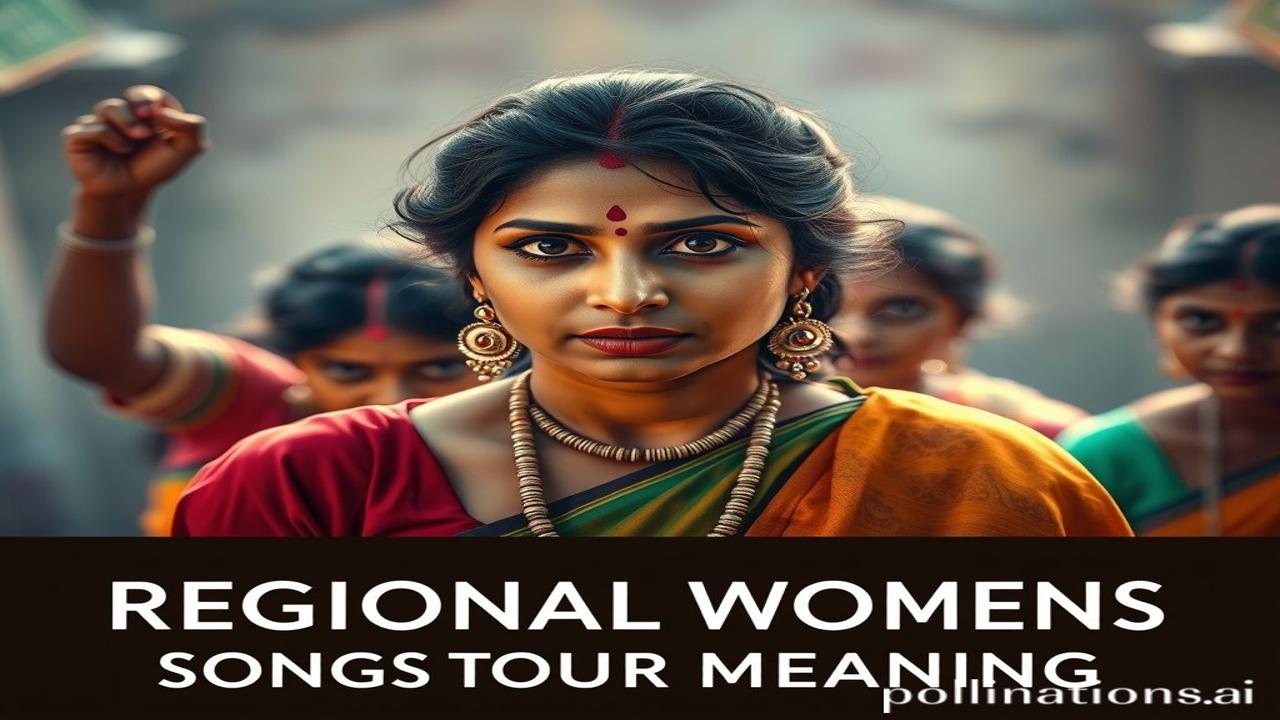Dhaaga, Raag, aur Riwaaz: Regional Women’s Folk Songs and Their Meaning
Kabhi socha hai, jab shaam dhalti hai aur gaon ki dehleez se mandir ki ghanti ki awaaz aati hai, toh uss pal mein kitni kahaniyan chupi hoti hain? These aren’t just melodies; they’re whispers of time, sung by generations of women, echoing through the valleys and fields of our Bharat. Aaj hum chalte hain unhi awaazon ki khoj mein, un geeton ki dastaan sunne, jo na sirf gaaye jaate hain, balki jiye jaate hain.
Folk Songs: A Living History Book
What are these folk songs? Regional women’s folk songs are, simply put, the heartbeats of our diverse cultures. These are songs passed down orally, usually through generations of women, reflecting their daily lives, joys, sorrows, rituals, and beliefs. Think of them as diaries set to music.
When and where did they originate? Their origins are often lost in the mists of time. Many emerged centuries ago, deeply rooted in the specific regions of India. From the ‘Lavani’ of Maharashtra to the ‘Bibaho Geet’ of Bengal, each song carries the unique flavor of its birthplace. They weren’t created in a recording studio; they were born in courtyards, fields, and around kitchen fires.
Why are they important? These songs aren’t just entertainment. They are a vital part of our cultural heritage. They preserve local dialects, customs, and traditions. They offer a window into the lives of women in different eras, their struggles, their dreams, and their resilience. They are a living testament to Bharatiyata, a tangible connection to our past.
A Glimpse into the Lives of Women
Imagine Ma Yashoda singing a lullaby to little Krishna, its melody weaving through the fields of Vrindavan. Or picture a Rajasthani woman, clad in vibrant lehenga-choli, singing a ‘Panihari’ song while walking miles to fetch water, her voice echoing across the desert landscape.
These songs are filled with their stories. We hear the anxieties of a young bride leaving her parental home in a ‘Bidai’ song. We feel the anticipation and joy of a festival in a ‘Haldi’ ceremony song. We witness their devotion to gods and goddesses in devotional folk songs.
Consider the life of a farmer’s wife in Punjab. Her song might speak of the scorching sun, the backbreaking labor in the fields, and her silent prayers for a good harvest. “O rabba, mere khet hara bhara rakhna, mehnati haathon ki laaj rakhna,” she might sing.
These songs are not always happy. They also voice the injustices and challenges faced by women. They talk about societal expectations, economic hardships, and the longing for freedom. They’re a powerful, if often unheard, voice of the voiceless.
Cultural Significance Today: Echoes of the Past
Even today, in a world dominated by Bollywood and pop music, regional women’s folk songs continue to thrive. You can still hear them sung during weddings, festivals, and religious ceremonies. They are passed down through families, ensuring that these ancient melodies don’t fade away.
In many villages, women’s self-help groups are reviving these songs, using them as a tool for empowerment and cultural preservation. They are teaching the younger generation these melodies, ensuring that the traditions are kept alive. They understand that these songs are not just entertainment; they are a part of their identity, their dharohar (heritage).
We also see influences in contemporary art, music, and even fashion. Designers are drawing inspiration from the vibrant colors and patterns of folk textiles, while musicians are incorporating traditional melodies and instruments into their modern compositions. The spirit of these folk songs lives on, subtly but powerfully, shaping our modern identity.
Myth-Buster: More Than Just Simple Tunes
Log samajhte hain ki folk songs toh bas gaon ki seedhi-saadi awaaz hain, lekin asli sach yeh hai ki inmein sangeet aur kavita ka gehra sambandh hai. These songs often employ complex musical structures and poetic devices. They are not just simple tunes; they are sophisticated works of art, reflecting the artistic sensibilities of the women who created them. They often contain hidden metaphors, allegories, and social commentary, rewarding careful listening and interpretation.
Visual and Sensory Overload
Imagine the air thick with the fragrance of jasmine and marigold during a wedding ceremony. The temple walls, cool and smooth to the touch, resonate with the sound of devotional hymns. The rhythmic beat of the dholak fills the air, making your feet tap involuntarily. The bright colors of the saris and lehengas create a dazzling spectacle. The combined effect is a sensory feast that nourishes the soul.
Closing Insight: The Enduring Power of Tradition
Regional women’s folk songs are more than just melodies; they are a vibrant tapestry woven with threads of history, culture, and the indomitable spirit of women. They are a reminder of our roots, a celebration of our diversity, and a testament to the enduring power of tradition. As the famous saying goes, “Sanskriti hi pehchaan hai.” (Culture is identity.) Let us cherish and preserve this invaluable heritage for generations to come. Just like the Ganga keeps flowing, may the melodies of our past continue to resonate in our present and inspire our future.
